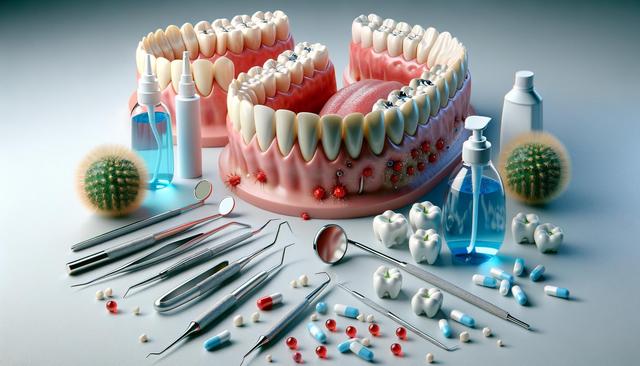How to Identify Symptoms of Gum Infection Early
Recognizing the early signs of gum infection is crucial for preventing more serious complications. Knowing how to identify symptoms of gum infection early can help individuals seek timely treatment and avoid long-term damage to their oral health. Some common early indicators include:
- Red, swollen, or tender gums
- Bleeding during brushing or flossing
- Persistent bad breath or a bad taste in the mouth
- Receding gum lines or visible pockets between the teeth and gums
These symptoms may appear subtle at first, but they often signal the beginning of gingivitis, the initial stage of gum disease. If left untreated, gingivitis can progress to periodontitis, a more severe form of gum infection that can lead to tooth loss and other health issues.
Common Causes of Gum Inflammation and Pain
Understanding the common causes of gum inflammation and pain is essential for both prevention and treatment. Gum infections are typically the result of poor oral hygiene, which leads to plaque buildup. However, several other factors can also contribute:
- Poor brushing and flossing habits
- Smoking or using tobacco products
- Hormonal changes, such as during pregnancy or menopause
- Certain health conditions like diabetes or compromised immune systems
- Medications that reduce saliva flow or affect gum tissue
Addressing these root causes is an important first step in managing gum health. Regular dental check-ups and consistent oral hygiene practices can significantly reduce the risk of gum inflammation and related pain.
Treatment Options for Mild to Severe Gum Infections
There are various treatment options for mild to severe gum infections, depending on the stage and severity of the condition. For mild cases, such as early-stage gingivitis, a professional dental cleaning and improved oral hygiene may suffice. As the infection progresses, more advanced interventions may be necessary.
Treatment approaches include:
- Professional scaling and root planing to remove plaque and tartar
- Antibiotic therapy to reduce bacterial infection
- Laser therapy to target and remove infected tissue
- Surgical procedures such as flap surgery or bone grafting for advanced periodontitis
Consulting with a dental professional is essential to determine the most appropriate course of action. Early intervention typically results in more effective and less invasive treatments.
Non Surgical Therapies for Improving Gum Health
In many cases, non surgical therapies for improving gum health can be highly effective, especially when treatment begins in the early stages of infection. These therapies aim to manage infection, reduce inflammation, and restore gum tissue health without the need for invasive procedures.
Common non-surgical options include:
- Deep cleaning techniques such as scaling and root planing
- Topical or oral antibiotics to control bacterial growth
- Antimicrobial mouth rinses prescribed by a dentist
- Laser treatment to promote healing and remove infected tissue
These methods are typically combined with improved daily oral care and follow-up visits to monitor progress. They are especially useful for patients who are not yet candidates for surgical treatments or those looking to maintain gum health after a more invasive procedure.
Home Care Tips to Support Gum Recovery
While professional treatment is key, consistent home care plays a vital role in supporting gum recovery. Following home care tips to support gum recovery can enhance healing, prevent recurrence, and contribute to long-term oral health. Key recommendations include:
- Brushing twice daily with a soft-bristled toothbrush
- Flossing at least once a day to remove plaque between teeth
- Using a dentist-recommended antimicrobial mouthwash
- Avoiding tobacco and limiting sugary foods
- Staying hydrated to support saliva production
In addition, scheduling regular dental cleanings and check-ups ensures any potential issues are addressed early. With a consistent routine and guidance from a dental care provider, most individuals can significantly improve their gum health over time.




Leave a Reply